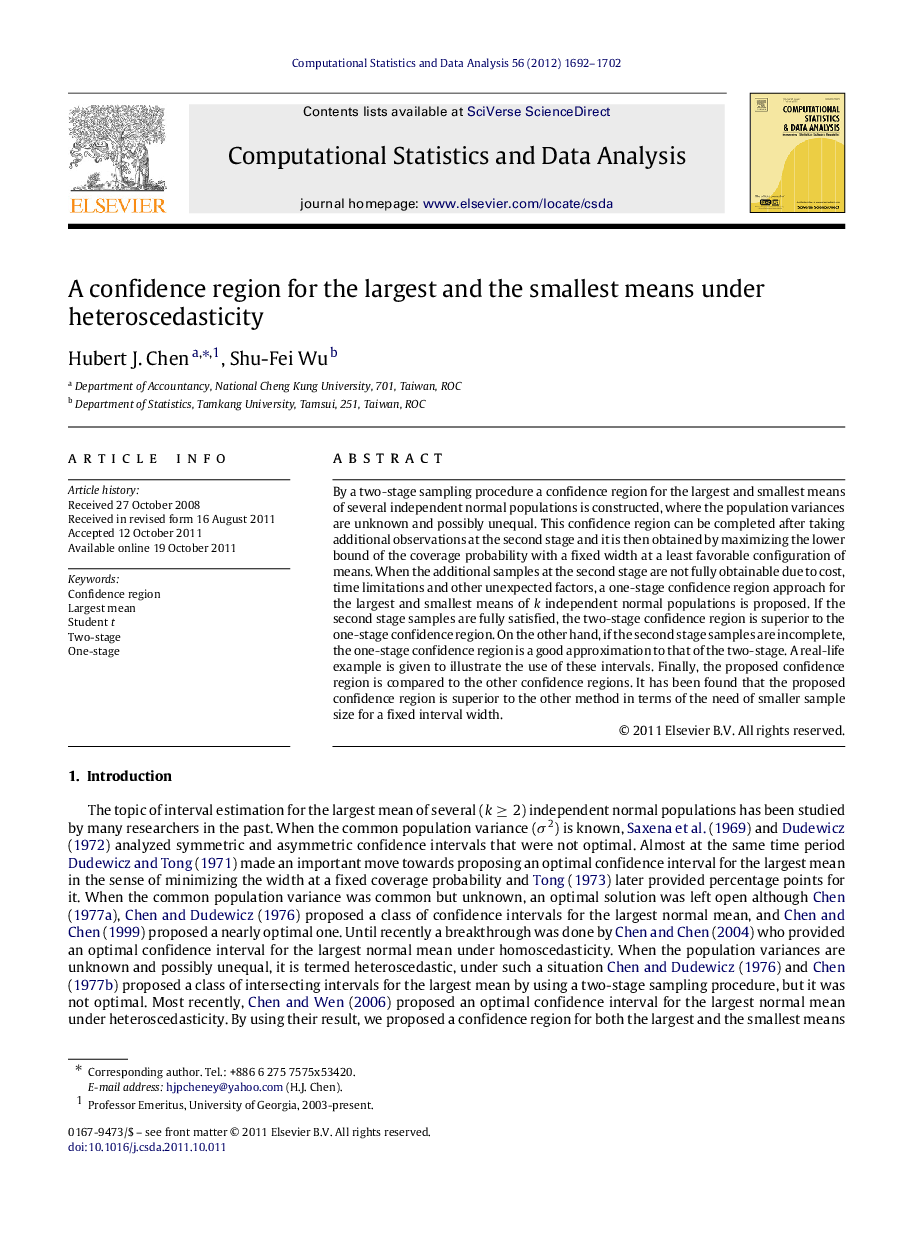| Article ID | Journal | Published Year | Pages | File Type |
|---|---|---|---|---|
| 416455 | Computational Statistics & Data Analysis | 2012 | 11 Pages |
By a two-stage sampling procedure a confidence region for the largest and smallest means of several independent normal populations is constructed, where the population variances are unknown and possibly unequal. This confidence region can be completed after taking additional observations at the second stage and it is then obtained by maximizing the lower bound of the coverage probability with a fixed width at a least favorable configuration of means. When the additional samples at the second stage are not fully obtainable due to cost, time limitations and other unexpected factors, a one-stage confidence region approach for the largest and smallest means of kk independent normal populations is proposed. If the second stage samples are fully satisfied, the two-stage confidence region is superior to the one-stage confidence region. On the other hand, if the second stage samples are incomplete, the one-stage confidence region is a good approximation to that of the two-stage. A real-life example is given to illustrate the use of these intervals. Finally, the proposed confidence region is compared to the other confidence regions. It has been found that the proposed confidence region is superior to the other method in terms of the need of smaller sample size for a fixed interval width.
